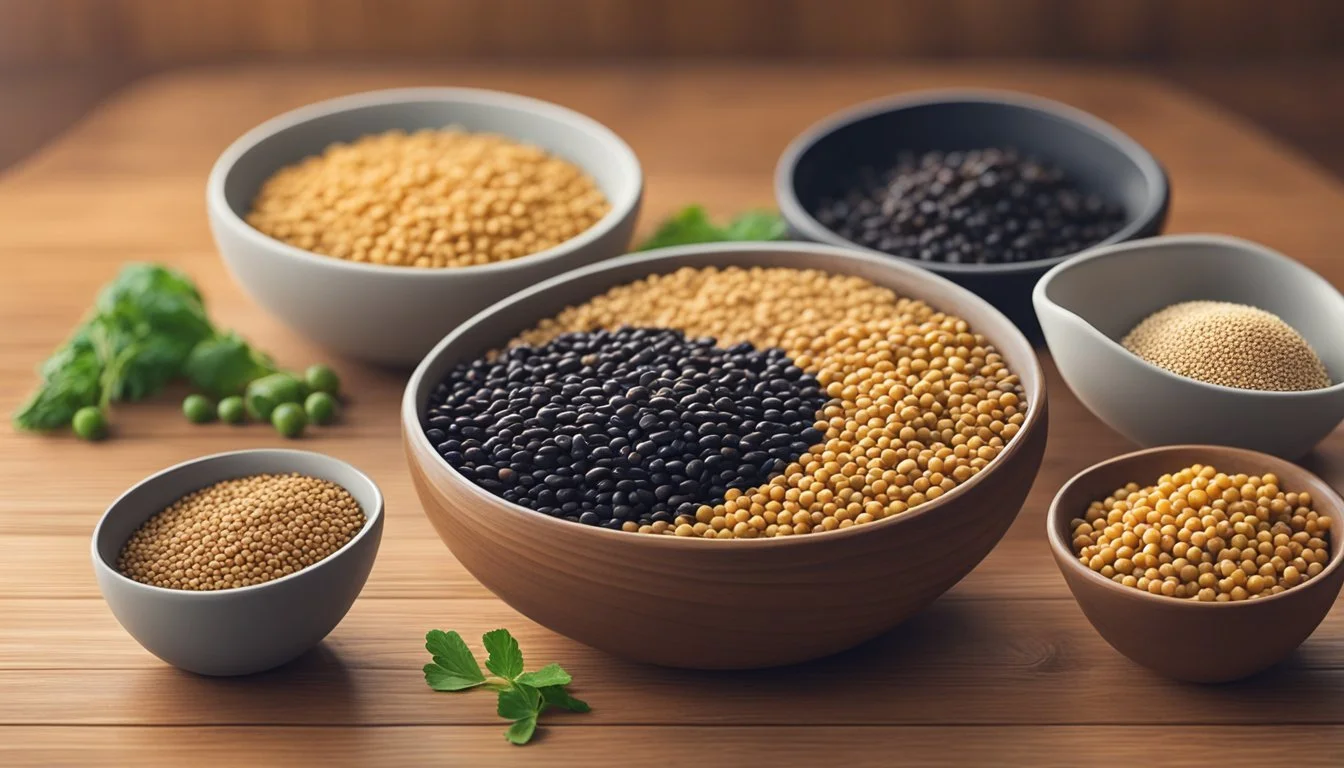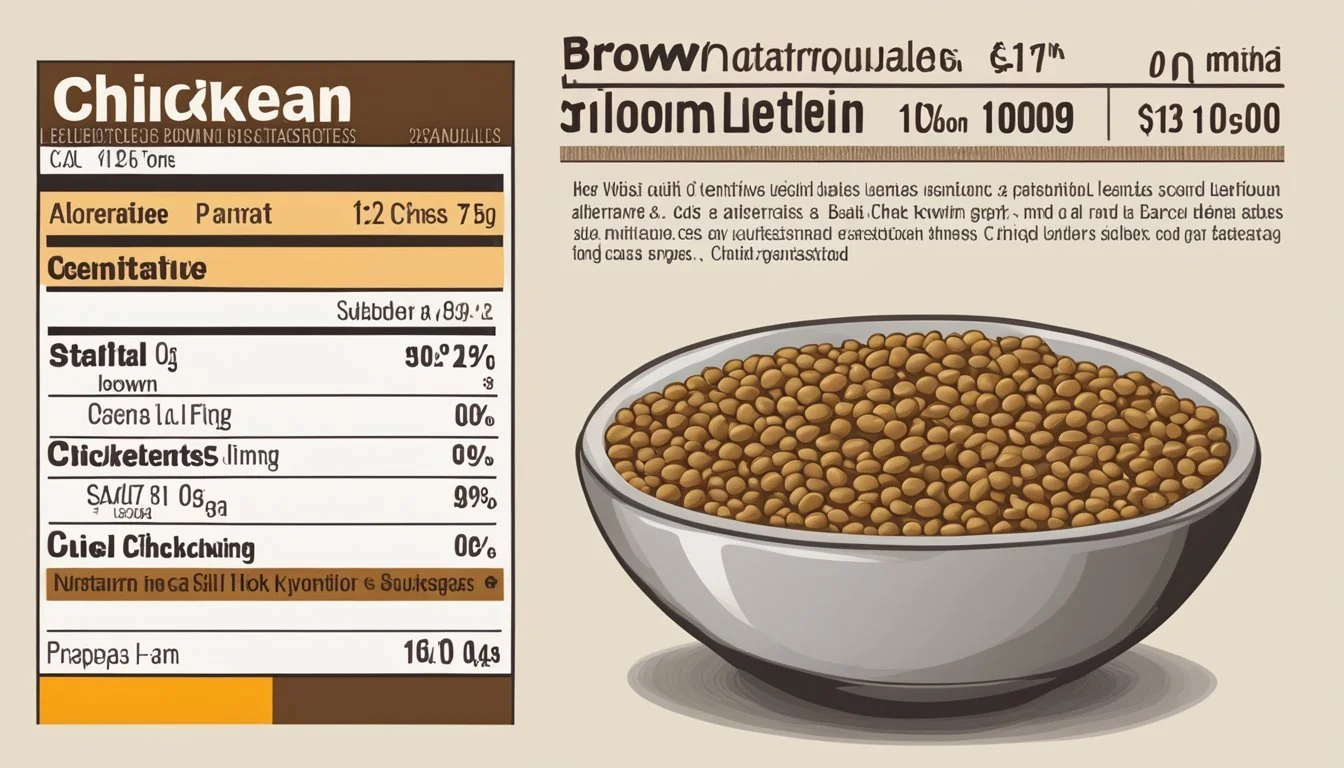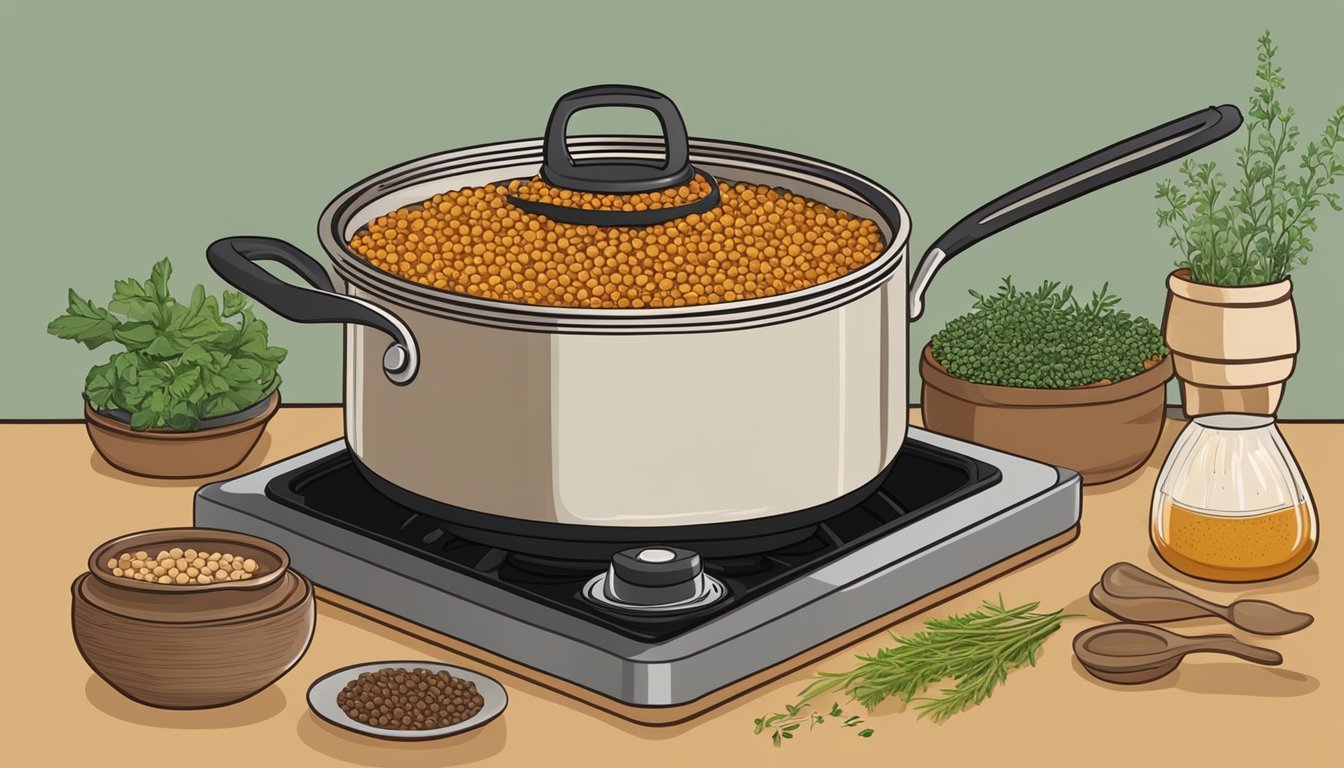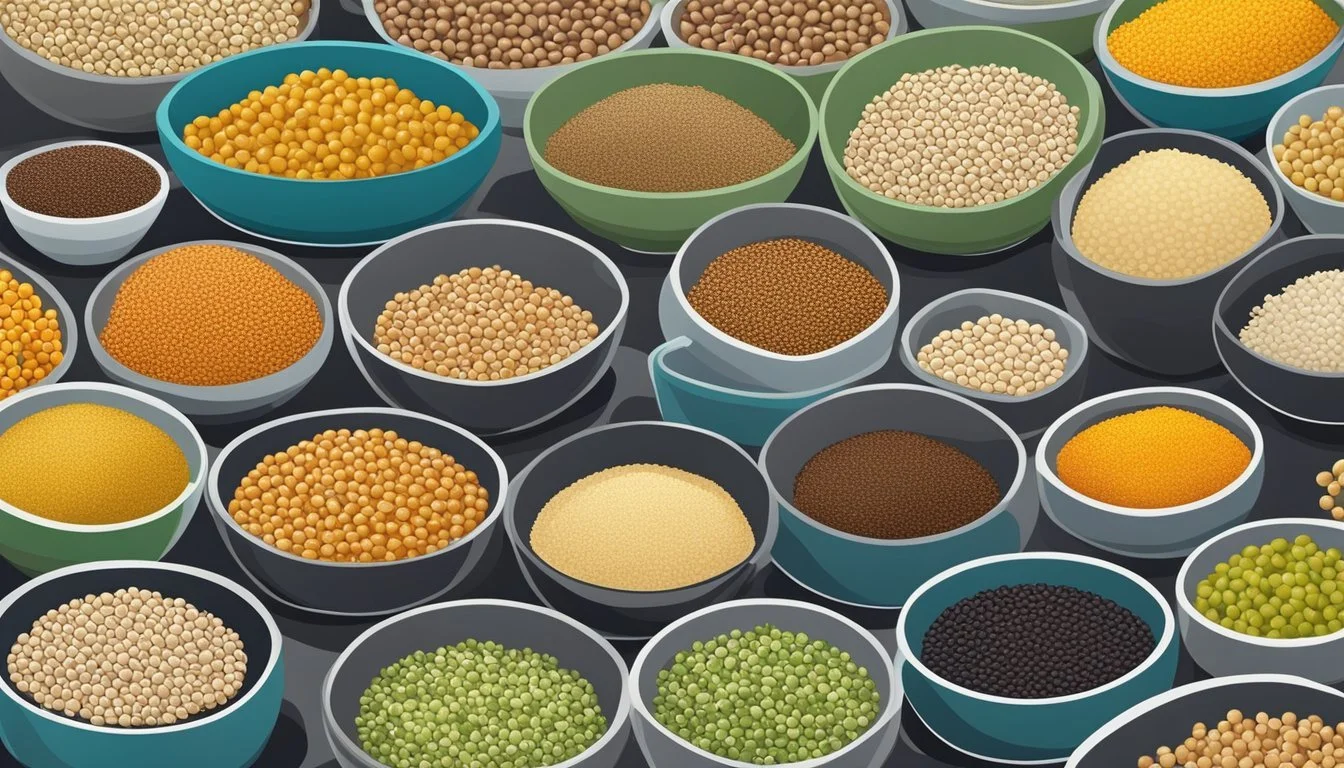Brown Lentils Substitutes
Top Alternatives for Cooking
Brown lentils, a nutritious legume, are a staple in many kitchens due to their rich protein, fiber, and essential mineral content, including iron and folate. They play a vital role in various dishes, adding both flavor and nutritional value. If you find yourself without brown lentils, fear not — there are numerous suitable substitutes that can seamlessly take their place in your recipes.
For those aiming to maintain the high nutritional content, chickpeas, beans, and soybeans make excellent alternatives. These substitutes not only provide a comparable amount of protein and fiber but also hold up well in diverse culinary applications, from soups to stews. Other worthy mentions include green lentils and quinoa, both of which can mimic the texture and taste of brown lentils.
Exploring different substitutes can introduce new textures and flavors to your cooking. Adapting your recipes to these alternatives ensures you never miss out on a nutritious meal, even when brown lentils are unavailable. Whether it’s chickpeas for a hearty stew or quinoa for a light salad, the options are plentiful and delicious.
Understanding Brown Lentils
Brown lentils belong to the legume family and are popular in many cuisines around the world. They have a mild, nutty flavor and a slightly firm texture that holds up well during cooking.
Rich in protein and fiber, brown lentils are a nutritious addition to any diet. One cup of cooked brown lentils provides about 18 grams of protein and 15 grams of fiber.
These lentils are also packed with essential minerals. They are a good source of iron, which is crucial for transporting oxygen in the blood, and potassium, which helps maintain normal blood pressure.
Another advantage of brown lentils is their versatility in recipes. They can be used in soups, stews, salads, and even as a meat substitute in various dishes.
Here’s a quick nutrition breakdown for a serving of cooked brown lentils:
Nutrient Amount per Cup Protein 18 grams Fiber 15 grams Iron 6.6 mg Potassium 731 mg
Brown lentils also contain important vitamins such as folate (B9), thiamine (B1), and vitamin B6. These vitamins play key roles in cell division, energy metabolism, and brain health.
Cooking brown lentils is simple. They do not require soaking and typically cook in 20-30 minutes. Rinse them under cold water, then simmer in a pot with water or broth. They can be seasoned with a variety of herbs and spices to enhance their natural flavor.
Nutritional Profile of Brown Lentils
Brown lentils provide a robust nutritional profile that supports various health benefits.
They are especially known for their high protein content, making them an excellent source of plant-based protein. This nutrient density aids muscle repair and growth. Additionally, brown lentils are rich in fiber, promoting digestive health and helping in maintaining stable blood sugar levels, which is beneficial for individuals with diabetes.
Vitamins and Minerals
Brown lentils are packed with essential vitamins and minerals. Key vitamins include:
Folate (Vitamin B9): Vital for DNA formation and cell division.
Vitamin B1 (Thiamine): Important for energy metabolism.
Vitamin B6: Supports brain health.
Vitamin K: Aids in blood clotting.
Mineral Content
Significant minerals found in brown lentils include:
Iron: Crucial for blood health and oxygen transport.
Potassium: Helps regulate fluid balance and blood pressure.
Manganese: Supports bone development and metabolic processes.
Complex Carbohydrates
Brown lentils are a good source of complex carbohydrates, which provide sustained energy. This makes them a preferred choice for maintaining steady energy levels throughout the day.
These nutrients collectively contribute to heart health and can potentially lower the risk of heart disease. The balanced nutritional profile of brown lentils makes them a valuable addition to a healthy diet.
Common Uses of Brown Lentils in Cuisine
Brown lentils are versatile and nutritious, making them a staple ingredient in various dishes. They are commonly used in traditional Indian dishes, hearty soups and stews, and as a base for salads and side dishes.
Traditional Indian Dishes
Brown lentils are integral to many traditional Indian recipes. One popular dish is Dal Makhani, where brown lentils are slow-cooked with red kidney beans, spices, and cream. This dish is often enjoyed with naan or rice.
Mujadara, a Middle Eastern dish with roots in Indian cuisine, combines brown lentils with rice, caramelized onions, and spices. It's a well-loved vegan and vegetarian option, known for its comforting flavors and textures.
Soups and Stews
Brown lentils are excellent in soups and stews due to their hearty texture and ability to absorb flavors. Lentil soup is a classic, featuring lentils, vegetables, and various seasonings. This soup can be modified with different herbs and spices.
In stews, brown lentils add thickness and nutrition. They complement both vegetarian and meat-based stews, absorbing the broth's essence while maintaining their shape, making the dish rich and satisfying.
Salads and Side Dishes
In Western cuisine, brown lentils are popular in salads and side dishes. Cold lentil salads often include vegetables, herbs, and a tangy dressing, providing a nutritious and filling option.
Warm lentil salads mix lentils with roasted vegetables or greens. As a side dish, brown lentils are frequently seasoned with herbs and spices, serving alongside meats or other main courses to enhance the meal’s nutritional value.
Brown lentils are a versatile and valuable addition to various cuisines, offering flavor, texture, and nutrition to a wide range of dishes.
Ideal Brown Lentil Substitutes
Brown lentils are versatile and nutritious but sometimes may not be readily available. Several other lentil varieties can serve as suitable replacements, each with unique properties catering to different culinary needs and tastes.
Green Lentils
Green lentils are a strong substitute for brown lentils. Known for their firm texture and peppery flavor, they hold up well in salads and hearty dishes. Green lentils take slightly longer to cook compared to brown lentils.
These lentil varieties are rich in protein and fiber, making them a nutritious option. They are especially good in soups and stews where maintaining texture is crucial. Green lentils’ sturdiness also helps them retain their shape during cooking.
Red Lentils
Red lentils provide a distinct difference in both color and texture. They cook faster than other lentils and tend to become mushy, making them an excellent choice for dals, purees, and thickening soups.
Unlike brown lentils, red lentils have a creamy texture and a slightly sweet, nutty taste. They are often split and cook down quickly, which can be ideal for creating smooth, hearty dishes. Nutritionally, red lentils are rich in protein and fiber.
Black Lentils
Black lentils, also known as beluga lentils, resemble caviar with their small, glossy appearance. They offer a nutty taste and firm texture, similar to green lentils, but with a more unique look.
These lentils are excellent in salads and elegant side dishes. Black lentils are nutrient-dense, providing a good source of protein, iron, and fiber. They generally require a similar cooking time to brown lentils and maintain their shape well.
French Lentils
French lentils, or lentilles du Puy, are renowned for their earthy flavor and firm texture. These puy lentils are particularly well-suited for dishes that require lentils to stay intact, such as salads and side dishes.
French lentils cook evenly and have a beautiful speckled appearance. They are slightly smaller than brown lentils but offer a comparable nutty taste. These lentils are not only valued for their robust flavor but also for their nutritional profile, including high levels of protein and minerals.
Yellow Lentils
Yellow lentils share similarities with red lentils but offer a milder flavor and cook down to a soft, creamy consistency. They are used frequently in Indian cuisine for dishes like dals and soups.
Yellow lentils, also known as moong dal, are split and hulled, cooking quickly and breaking down easily. Though they lack the firmness of brown lentils, their creamy texture is ideal for smooth and rich recipes. They are a good source of protein and essential nutrients.
Each of these lentil varieties provides unique benefits and characteristics, allowing for versatile substitution in various recipes. Whether seeking texture, flavor, or nutrient content, these substitutes can effectively replace brown lentils in many culinary endeavors.
Alternative Plant-Based Protein Options
Alternative plant-based proteins such as chickpeas, quinoa, tofu, tempeh, and black beans not only provide essential nutrients but also cater to various dietary preferences. These options are rich in protein, fiber, and other vital nutrients.
Chickpeas
Chickpeas, also known as garbanzo beans, are a versatile legume and staple in many vegetarian and vegan diets. A single cup of cooked chickpeas provides approximately 15 grams of protein and is also high in dietary fiber.
They are a good source of iron, making them an excellent option for those looking to boost their iron intake through plant-based foods. Chickpeas can be incorporated into various dishes such as hummus, stews, and salads, offering both nutritional benefits and a hearty, satisfying texture.
Quinoa
Quinoa is a gluten-free grain known for its high protein content and complete amino acid profile. One cup of cooked quinoa contains about 8 grams of protein, along with important minerals like magnesium and iron.
Quinoa's fiber content aids in digestion and promotes a feeling of fullness. It can be used as a base for salads, in soups, or as a side dish, making it a versatile alternative for those seeking a nutrient-dense food option.
Tofu
Tofu, made from soybeans, is a highly adaptable plant-based protein that fits well in various dishes. It offers around 10 grams of protein per half-cup serving and is low in calories and fat.
Tofu comes in different textures, from silken to extra-firm, making it suitable for a wide range of culinary uses. It contains essential amino acids and is a good source of iron, making it a nutritious choice for both vegetarians and vegans.
Tempeh
Tempeh, another soy-based product, differs from tofu in its fermentation process, resulting in a firmer texture and a nuttier flavor. It contains approximately 21 grams of protein per cup, making it one of the highest plant-based protein sources.
Tempeh is also rich in probiotics due to its fermentation, which can benefit gut health. It contains fiber, iron, and all essential amino acids, making it a comprehensive nutrition option. Tempeh can be marinated and used in stir-fries, sandwiches, and salads.
Black Beans
Black beans are a nutrient powerhouse and excellent plant-based protein source. A single cup of cooked black beans provides about 15 grams of protein and 15 grams of fiber, aiding digestive health and sustaining energy levels.
They are rich in iron and other vital nutrients, making them highly nutritious. Black beans can be included in various dishes such as soups, stews, salads, and even as a base for vegetarian burgers, providing both versatility and substantial health benefits.
Cooking and Preparation Tips for Lentil Substitutes
When cooking lentil substitutes, consider their cooking times, techniques, and how they pair with spices and flavors. Adjusting methods for different substitutes ensures that dishes achieve the desired taste and texture.
Soaking and Cooking Techniques
Green Lentils: These are closest to brown lentils in terms of texture and cooking time. No soaking is required. Simmer for 20-30 minutes until tender.
Red Lentils: They cook much faster, requiring only 15-20 minutes. They break down quickly, so they are ideal for soups and stews where a creamy texture is desired.
Split Peas: Soak for a few hours or overnight for best results. Boil for 30-45 minutes.
Chickpeas: Always soak overnight. Boil for 60-90 minutes until soft. Steamed or roasted chickpeas make great additions to salads and grain bowls.
Small Pasta: Varieties like orzo and macaroni can substitute lentils without soaking. Cook according to package directions, usually 8-10 minutes until al dente.
Brown Rice: This requires a longer cooking time. Boil or steam for 40-45 minutes. Soaking beforehand can reduce cooking time slightly.
Flavor Pairings and Spice Usage
Green and Brown Lentils: Pair well with bay leaves, cumin, garlic, and herbs like thyme and rosemary. Use in hearty soups, stews, and salads.
Red Lentils: Best with curry spices, such as turmeric, coriander, and cumin. Ideal for Indian and Middle Eastern dishes.
Split Peas: Combine with ham, bacon, or smoked paprika for a rich, savory flavor. Use in traditional pea soups.
Chickpeas: Complemented by garlic, lemon, olive oil, and herbs like parsley. Excellent in Mediterranean dishes.
Small Pasta: Works well with basic olive oil, garlic, and a sprinkle of Parmesan. Suitable for soups and pasta salads.
Brown Rice: Plays nicely with soy sauce, ginger, and sesame oil for an Asian flair. Use in stir-fries and grain bowls.
Accurate flavor pairing enhances the overall appeal of the dish, making substitutes just as flavorful as the original lentils.
Incorporating Lentil Substitutes in Special Diets
Lentil substitutes can be an excellent addition to various special diets. For those following a vegetarian or vegan lifestyle, options like chickpeas, tofu, and soybeans are rich in protein and can seamlessly replace lentils in many dishes.
Quinoa is another substitute suitable for gluten-free diets. It offers a good balance of protein, fiber, and complex carbohydrates. Peas and beans like pinto and kidney beans also fit well into gluten-free meal plans while providing essential nutrition.
Individuals managing diabetes might consider black beans. They have a low glycemic index and are high in fiber, helping to regulate blood sugar levels. Tofu and tempeh are also beneficial due to their low carbohydrate content and high protein levels.
Here's a quick comparison table of some lentil substitutes and their suitable diets:
Substitute Suitable Diets Key Nutrients Chickpeas Vegetarian, Vegan, Gluten-free Protein, Fiber Tofu Vegetarian, Vegan, Gluten-free Protein, Calcium Soybeans Vegetarian, Vegan Protein, Iron Quinoa Vegetarian, Vegan, Gluten-free Protein, Fiber Black Beans Vegetarian, Vegan, Gluten-free Fiber, Complex Carbs
Switching to these substitutes ensures that dietary needs are met without compromising on the benefits typically offered by brown lentils.
Storing Lentil Substitutes for Longevity
Proper storage of lentil substitutes ensures they maintain their quality and nutritional value. Different types of substitutes, such as beans, dried lentils, and canned options, require specific storage practices.
Dried Lentils and Beans: Store in an airtight container in a cool, dry place like a pantry. This prevents moisture and pests, helping to maintain a long shelf life of 12 months or more.
Canned Lentils and Beans: Keep canned items in a cool, dark place to extend their shelf life, typically up to 2-3 years. Ensure cans are not dented or damaged to prevent contamination.
Other Substitutes:
Tofu: Store tofu in the refrigerator and use it within a few days of opening. Keep it immersed in water and change the water daily.
Quinoa and Rice: Store these in airtight containers in a cool, dry place. They can last up to a year when stored properly.
Split Peas and Tempeh: Similar storage to dried beans and lentils. Tempeh, once opened, should be refrigerated and used within a week.
Checklist for Optimal Storage:
Use airtight containers to keep out moisture and pests.
Store in a cool, dry location away from direct sunlight.
Regularly check for spoilage or pests.
Maintaining proper storage habits ensures lentil substitutes are ready for use whenever needed.








